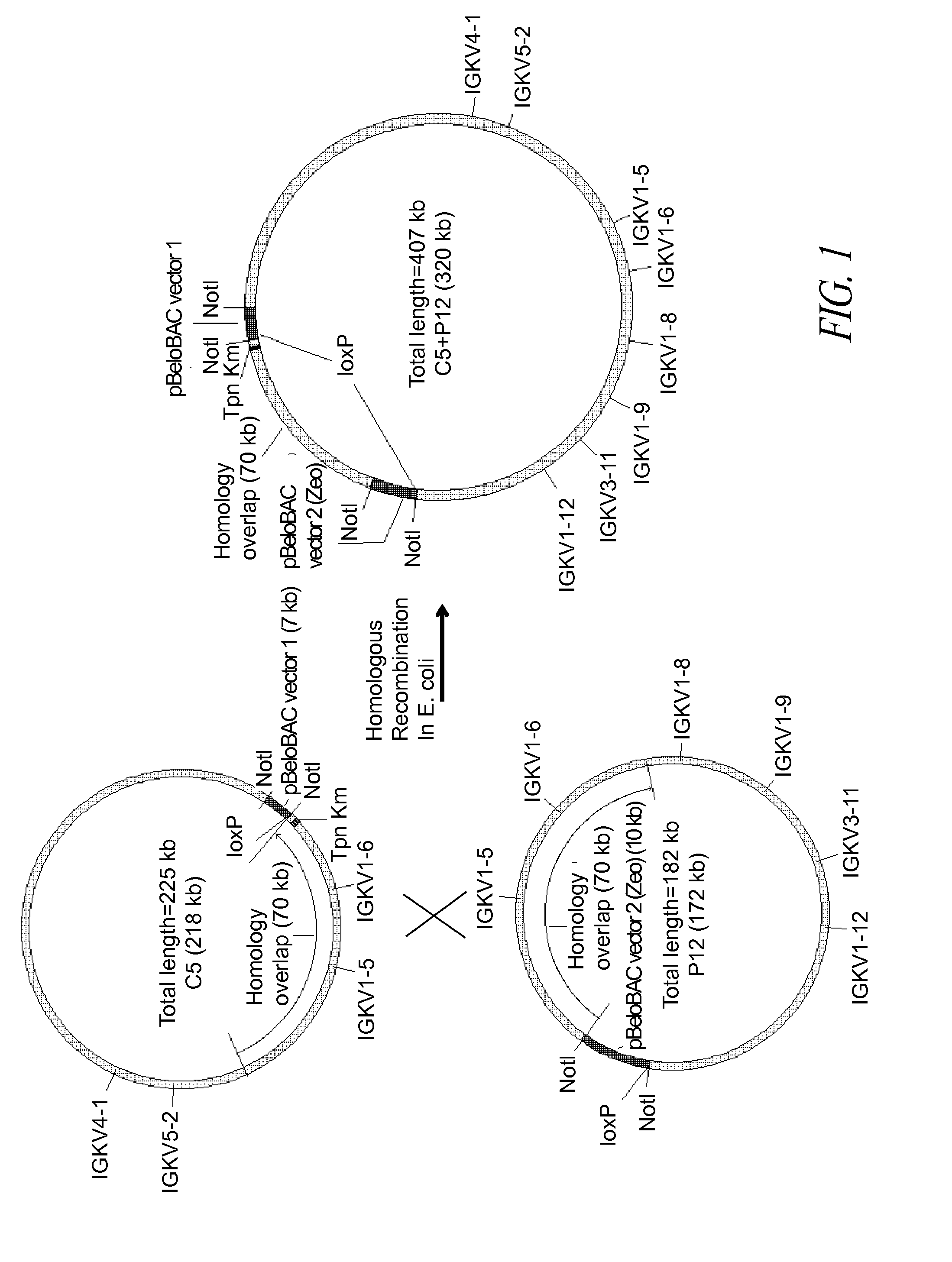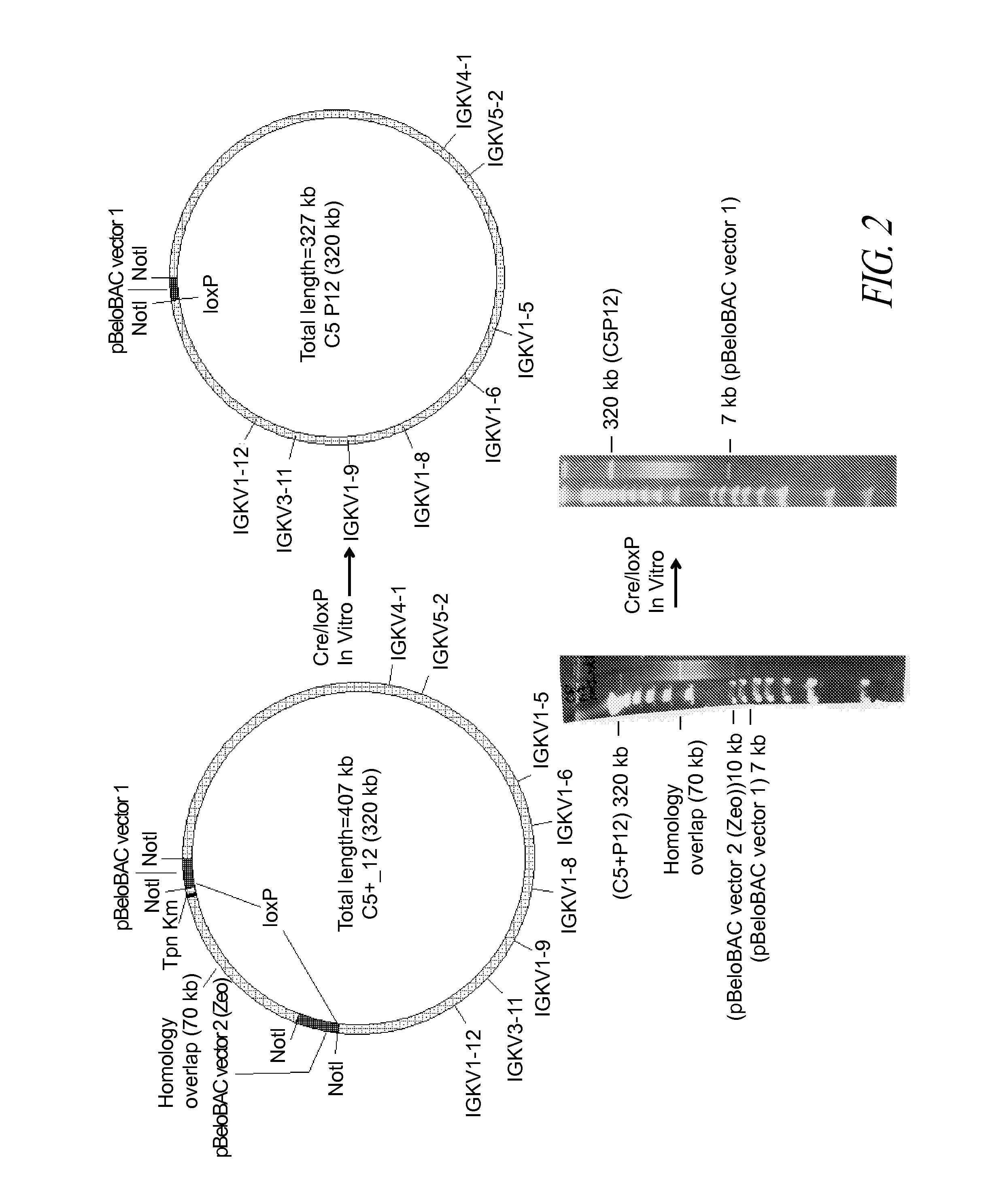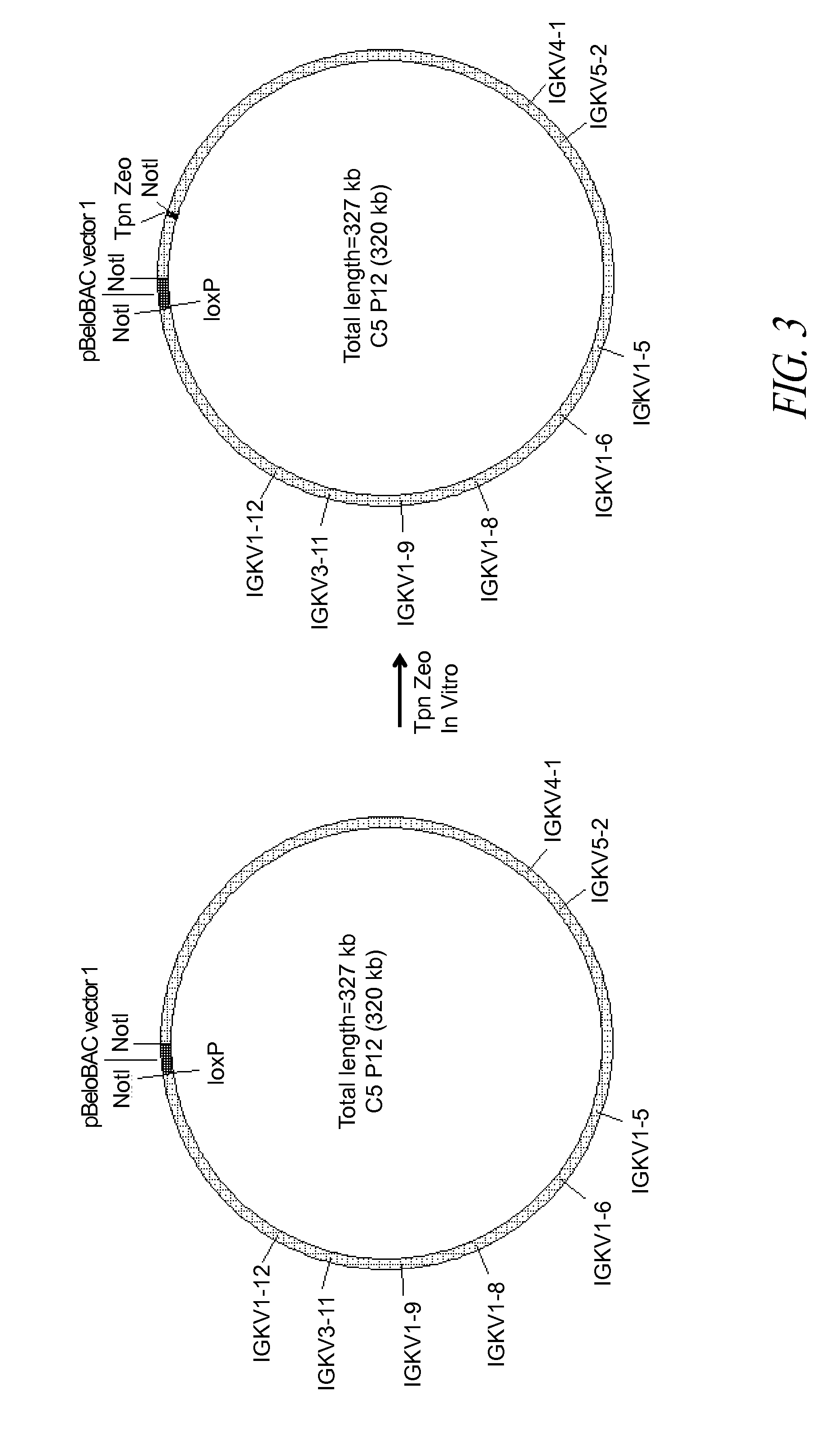Genetic engineering of non-human animals for the production of chimeric antibodies
a technology of chimeric applied in the field of chimeric immunoglobulin chains, antibodies and non-human animals and cells, can solve the problems of ineffectiveness, lack or loss of sufficient potency, induction of immune response against the therapeutic mab, and inefficiency of mabs for use in prevention and treatment,
- Summary
- Abstract
- Description
- Claims
- Application Information
AI Technical Summary
Benefits of technology
Problems solved by technology
Method used
Image
Examples
example 1
Construction of BAC C5P12
[0168]A BAC vector is based on the F-factor found in E. coli. The F-factor and the BAC vector derived from it are maintained as low copy plasmids, generally found as one or two copies per cell depending upon its life cycle. Both F-factor and BAC vector show the fi+ phenotype, which excludes an additional copy of the plasmid in the cell. By this mechanism, when E. coli already carries and maintains one BAC, and then an additional BAC is introduced into the E. coli, the cell maintains only one BAC, either the BAC previously existing in the cell or the external BAC newly introduced. This feature is extremely useful for selectively isolating BACs homologously recombined as described below.
[0169]The homologous recombination in E. coli requires the functional RecA gene product. In this example, the RecA gene had a temperature-sensitive mutation (recAts) so that the RecA protein was only functional when the incubation temperature was below 37° C. When the incubatio...
example 2
Construction of a 489 kb BAC Comprising the Majority of the Human Igκ Locus
[0174]Homologous recombination in E. coli was carried out by providing overlapping DNA substrates that are found in two circular BACs. BAC C20 (California Institute of Technology BAC library) was 218 kb in total size of which 206 kb was an insert of human genomic DNA comprising human Vκ genes. BAC C20 carried the KAN-2 kanamycin resistance transposon cassette (kanR) for selection in E. coli. BAC C5P12 made in Example 1 carried a zeocin resistance transposon cassette (zeoR) for selection in E. coli. C20 and C5P12 carried a 44 kb of native homology in the insert DNA. BAC C5P12 was carried in E. coli recAts.
[0175]Purified BAC C20 DNA was electroporated into E. coli recAts carrying BAC C5P12. The cells were incubated at 30° C., the permissive temperature for recAts activity, for 30 minutes. The fi+ phenotype conferred by the pBeloBAC vector prohibited the maintenance of more than one BAC in the cell, resulting in...
example 3
In Silico Assembly of the Sequence of a Functional 194 kb Synthetic Human Ig Lambda Light Chain Transgene
[0180]The complete annotated sequence of the human immunoglobulin lambda light chain locus (Igλ) is available. For example see GenBank (http: / / www.ncbi.nlm.nih.gov / genbank / ) Accession Number NG—000002. Additional detailed information, including bibliographic supporting scientific references is available at several public domain websites including Vbase (http: / / vbase.mrc-cpe.cam.ac.uk / ) and IMGT (http: / / imgt.cines.fr / ). This information includes data for the genetic and phenotypic content of the human Igλ locus, for instance including, but not limited to, identification of expressed gene sequences, pseudogenes, allelic variants, and which genes may encode domains prone to misfolding.
[0181]Using such public information, it is possible to assemble DNA sequences in silico using commonly available software for manipulating DNA sequences (e.g., MacVector, DNASIS) that encode a human Ig...
PUM
 Login to View More
Login to View More Abstract
Description
Claims
Application Information
 Login to View More
Login to View More - Generate Ideas
- Intellectual Property
- Life Sciences
- Materials
- Tech Scout
- Unparalleled Data Quality
- Higher Quality Content
- 60% Fewer Hallucinations
Browse by: Latest US Patents, China's latest patents, Technical Efficacy Thesaurus, Application Domain, Technology Topic, Popular Technical Reports.
© 2025 PatSnap. All rights reserved.Legal|Privacy policy|Modern Slavery Act Transparency Statement|Sitemap|About US| Contact US: help@patsnap.com



